Sophie Yan, "Phyto Education"
In Landscape Studio 1, students researched Toronto's Riverdale Park and then developed proposals for its transformation over a 30-year period. Sophie chose to focus on Riverdale Park East, which is situated on the east side of the Don River Valley.
Riverdale Park East is a large, open green space, popular with families and known for its spectacular views of the Toronto skyline. But the park is not without its environmental problems. The site was used as a landfill in the early 20th century. The Don River, which flows through the site, periodically floods, exposing the park to possible contamination from upstream landfills. And the Don Valley Parkway, a major north-south highway, is a constant source of harmful hydrocarbons and road salts.
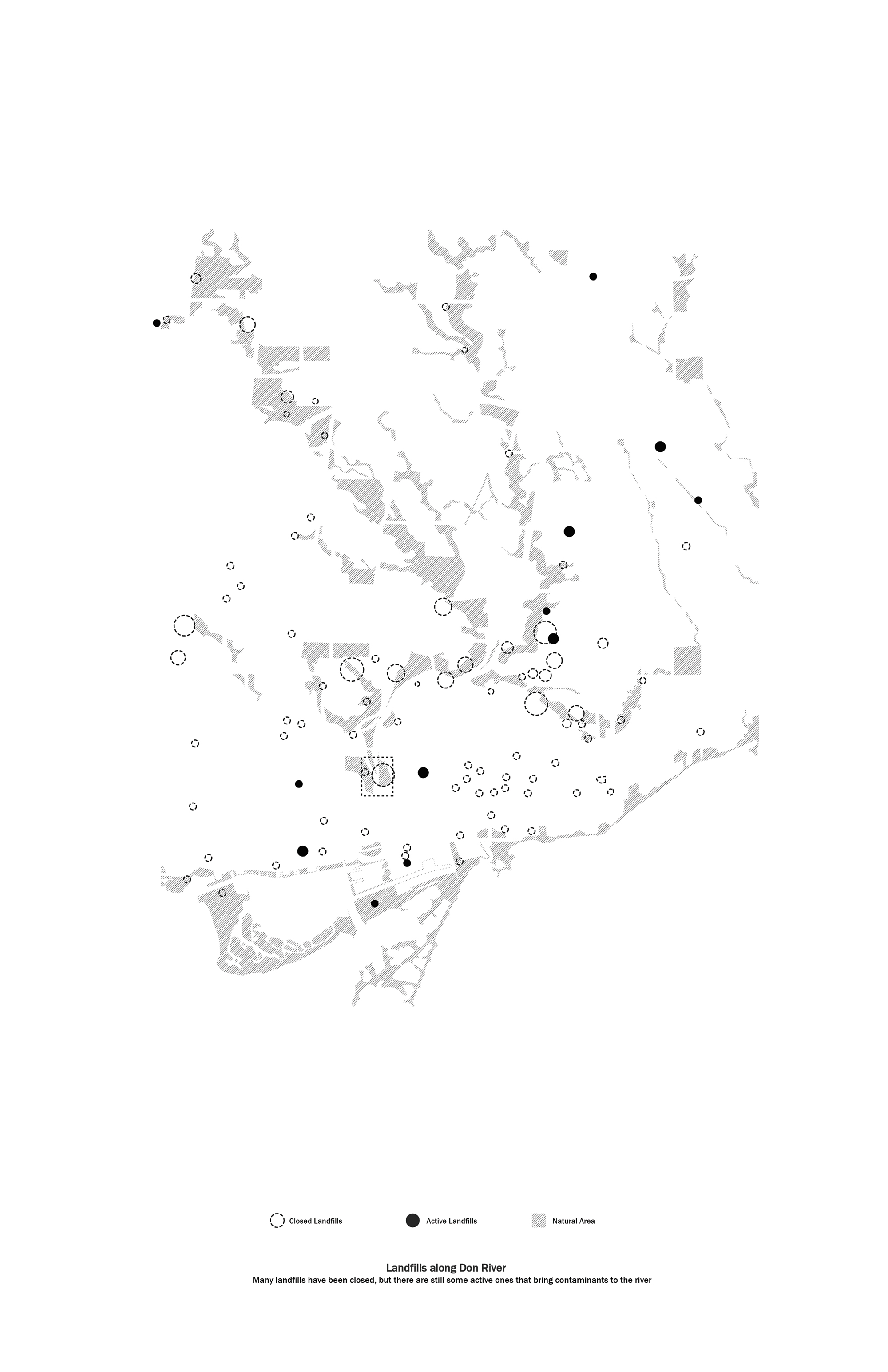
A diagram showing the locations of landfills relative to East Riverdale Park. (Click here to view a larger version.)
Sophie decided to design a 30-year planting strategy aimed at removing these pollutants from the park's environment. She approached the problem from a public-education perspective: in addition to remediating the park's soils, her design would help inform the public about the natural world.
In the first phase of Sophie's 30-year plan, pioneer trees would be planted along the banks of the Don River. This new forest would include red oak, Scots pine, Austrian pine, white cedar, and ginko, as well as aquatic plants like phragmites and bulrushes — species selected specifically for their ability to deal with salt and petroleum contamination from the parkway. According to Sophie's analysis, these plants would capture and phytovolitalize car-related contaminants, releasing them into the atmosphere as harmless plant byproducts. "These trees can't completely transform petroleum-related pollution into gases, but they have a high tolerance for that kind of contamination," Sophie says.
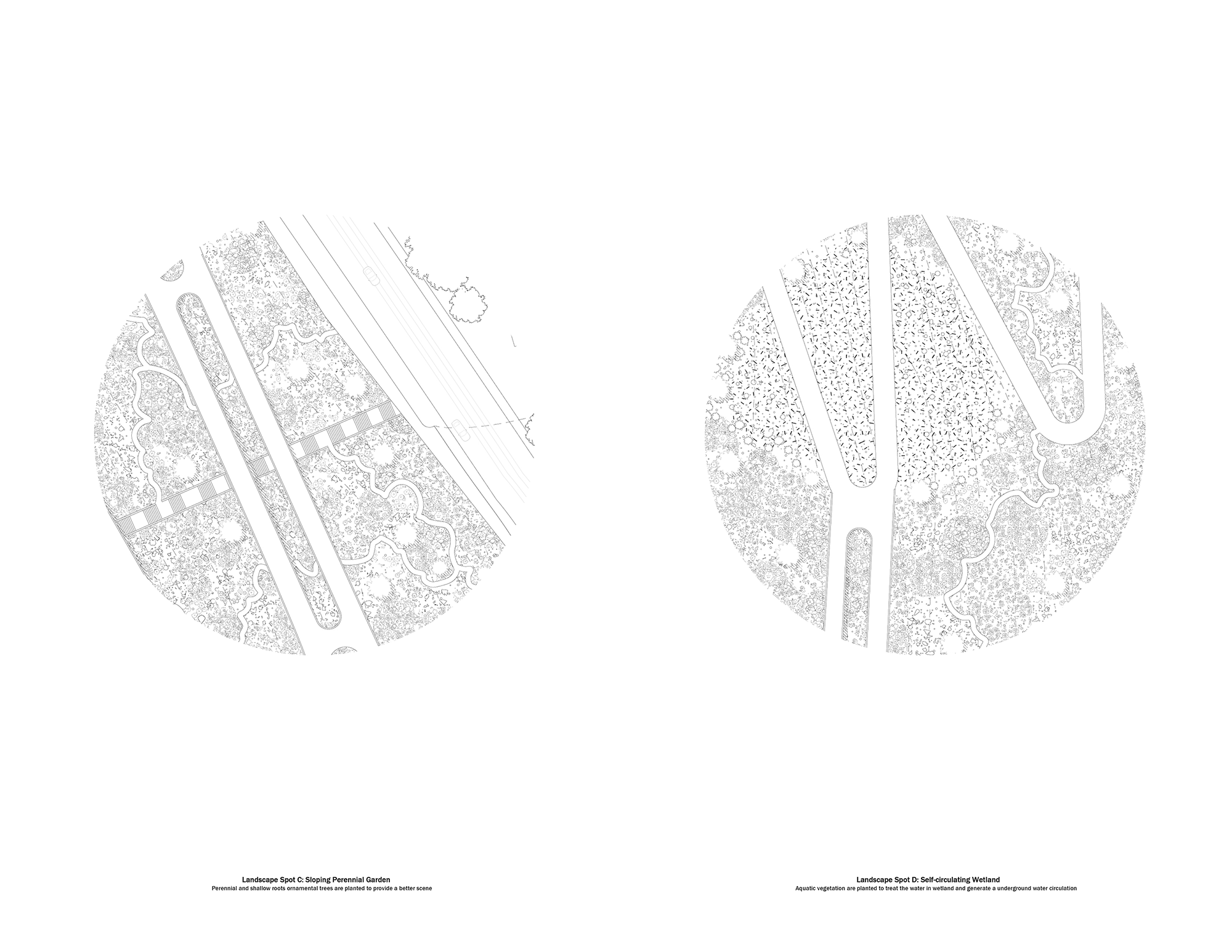
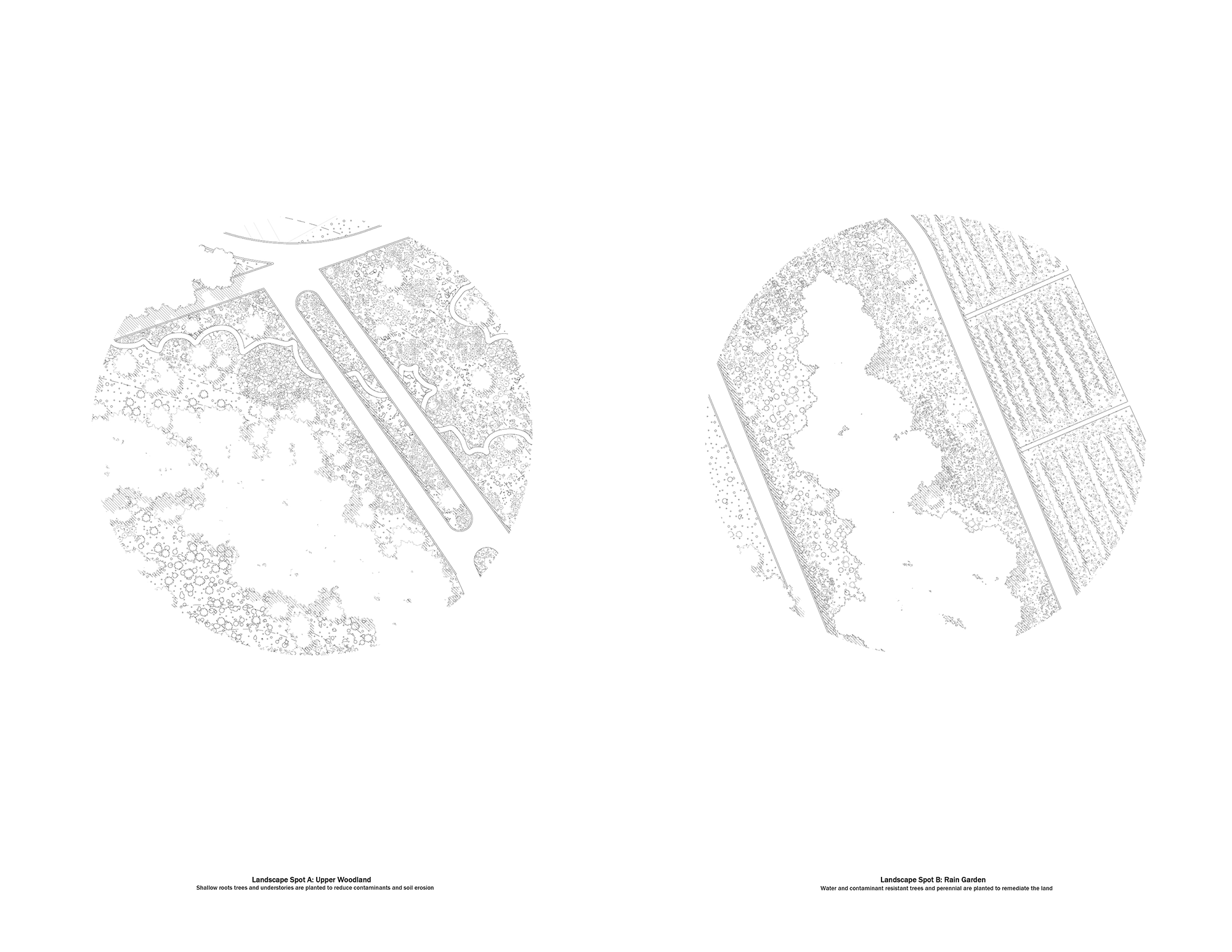
Detail images of Sophie's proposed interventions. (Click to view larger versions: one, two.)
Over the next 10-year period, Sophie's plan targets heavy metal contaminants in the river valley. A plant nursery would be established towards the southern end of the park. Seeds produced in the nursery would be used to establish a garden on the valley slope. Perennials, like sunflowers and daisies, and hearty crops, like corn, would absorb contaminants like zinc and cadmium. The contaminated plants could then be harvested and disposed of safely.
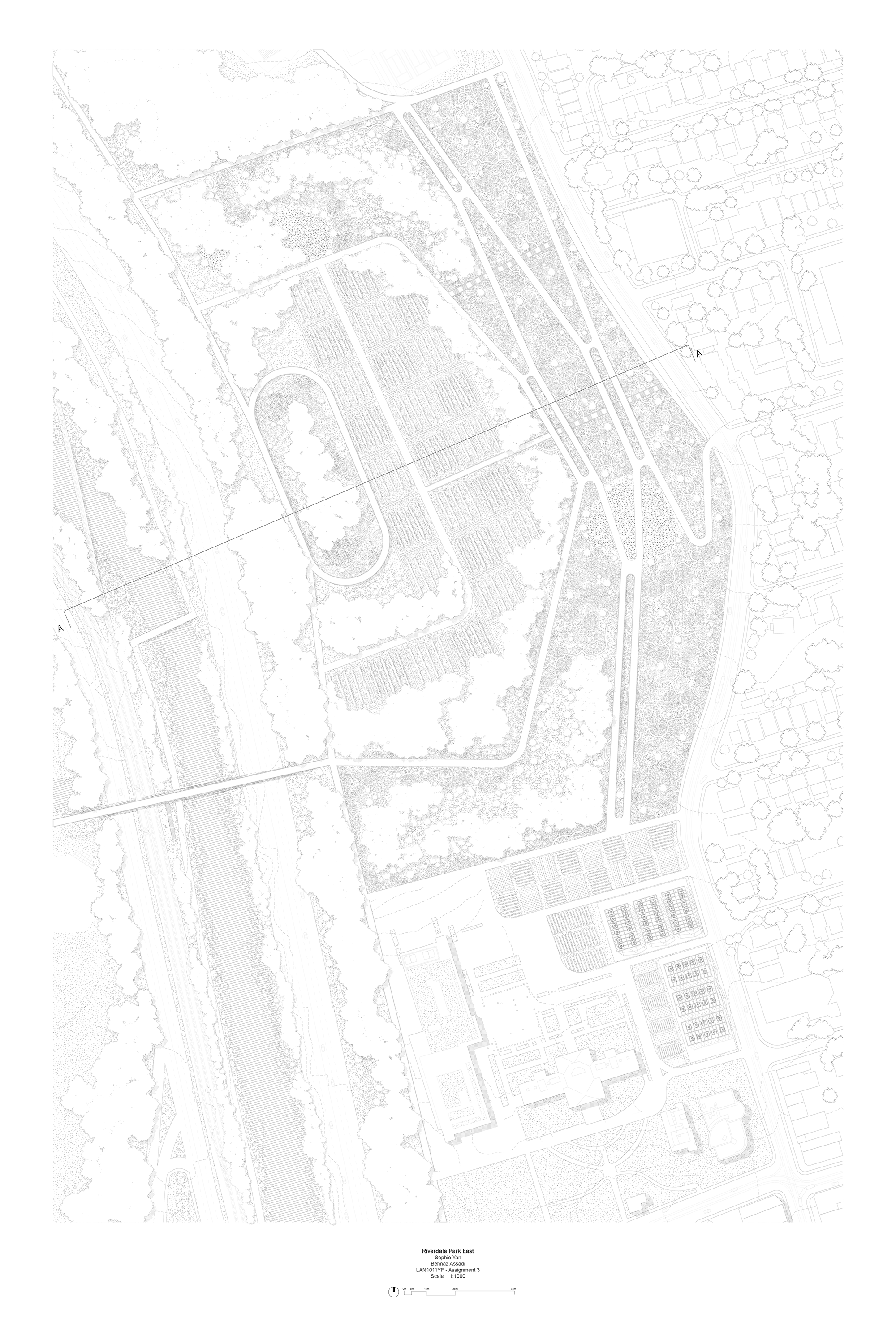
Sophie's proposed site plan. (Click here to view a larger version.)
In the final phase, the upper slope of the valley would be covered with plants selected specifically for their ability to target fluoride pollution. Trees like Norway maple, silver birch, and Japanese flowering cherry, and perennials like garden balsam and Japanese aster, would slowly stabilize and decontaminate the park's upper reaches.
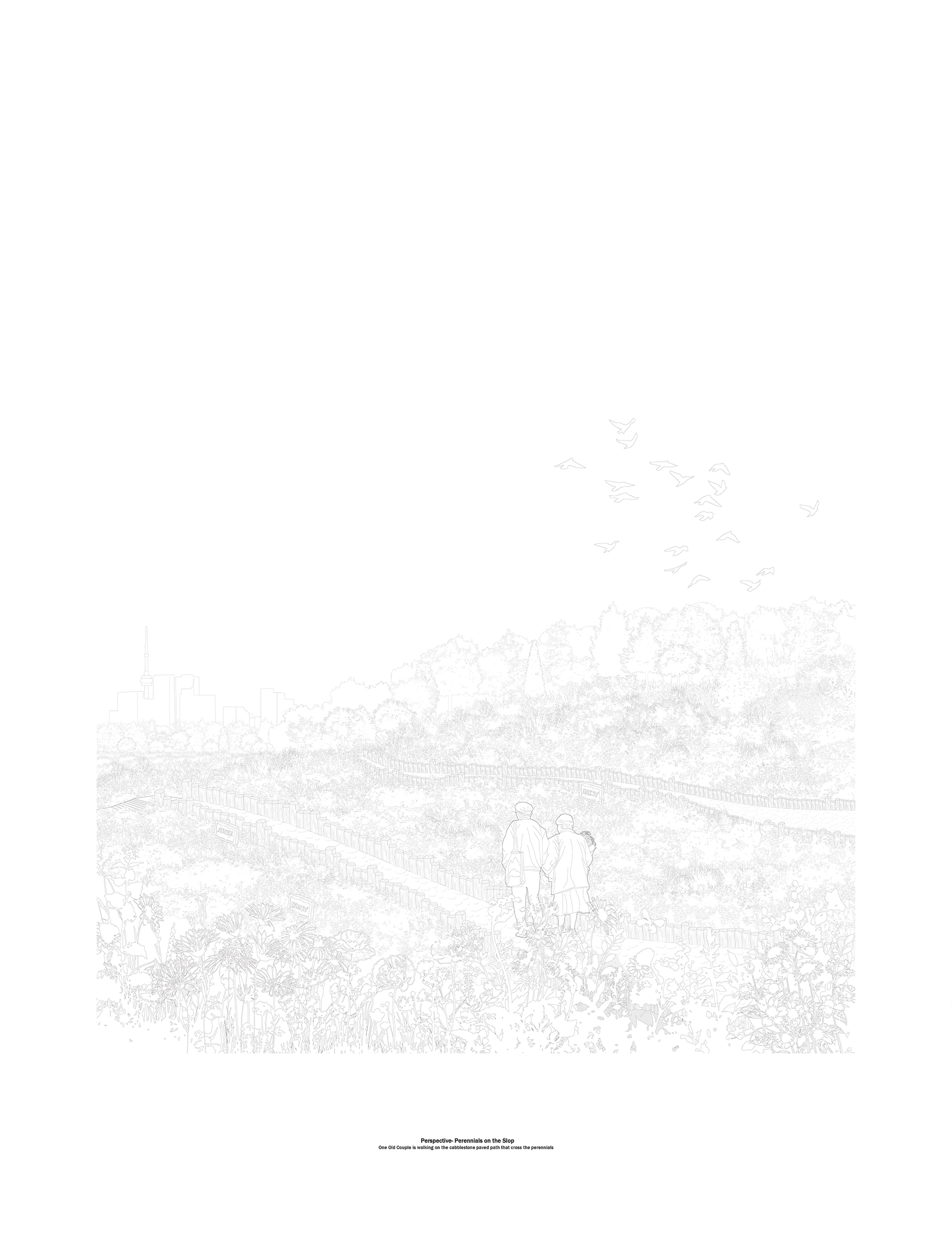
A perspective drawing of the valley slope, following its transformation into a perennial garden. (Click here to view a larger version.)
Winding throughout all these new plantings would be a new system of public pathways, some of them elevated to facilitate easy maintenance of the landscape. The plantings on the park's valley slope would labeled with wooden placards, in the style of a botanical garden, allowing members of the public to educate themselves about plant species while enjoying the outdoors.
Instructor: Behnaz Assadi

